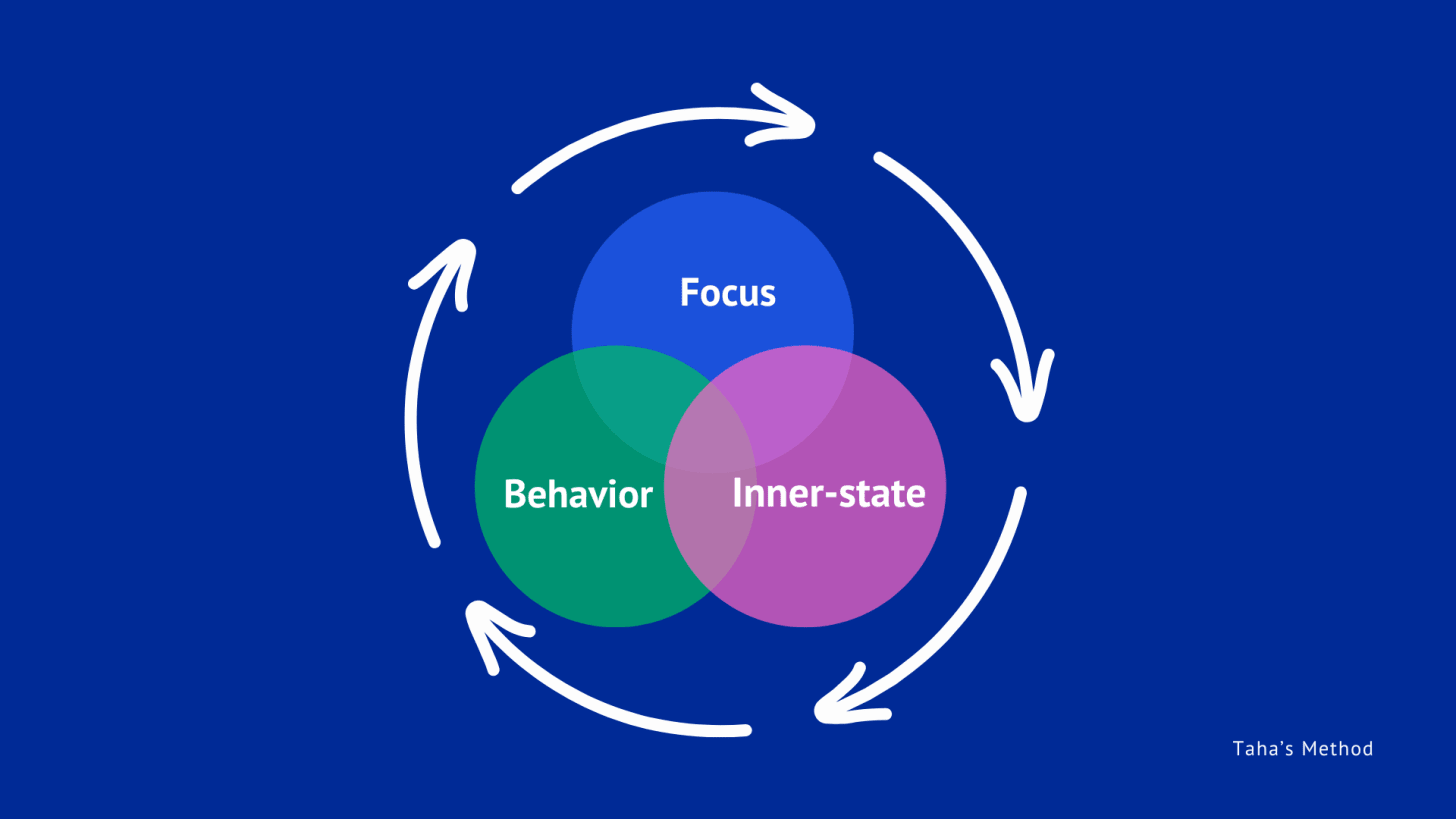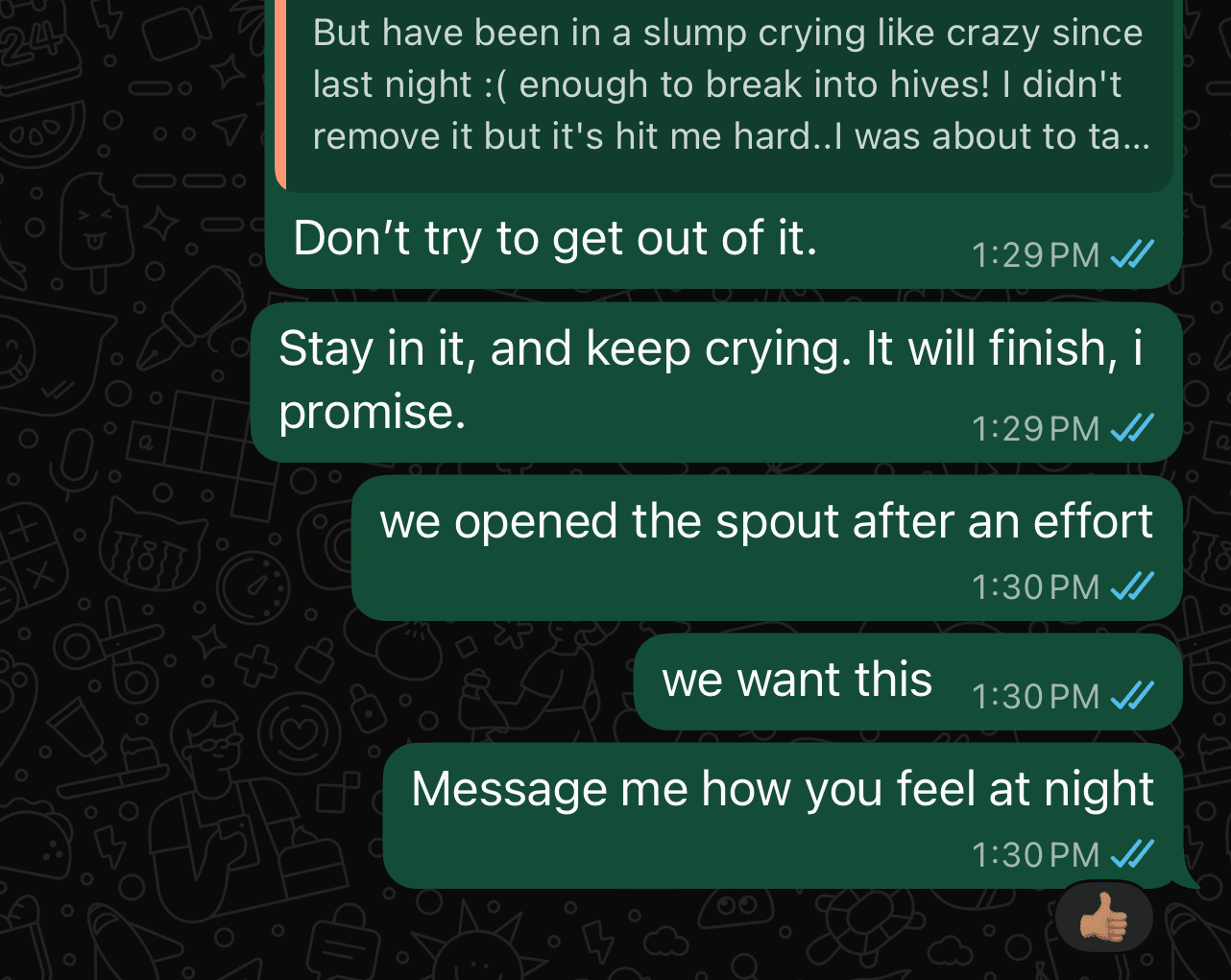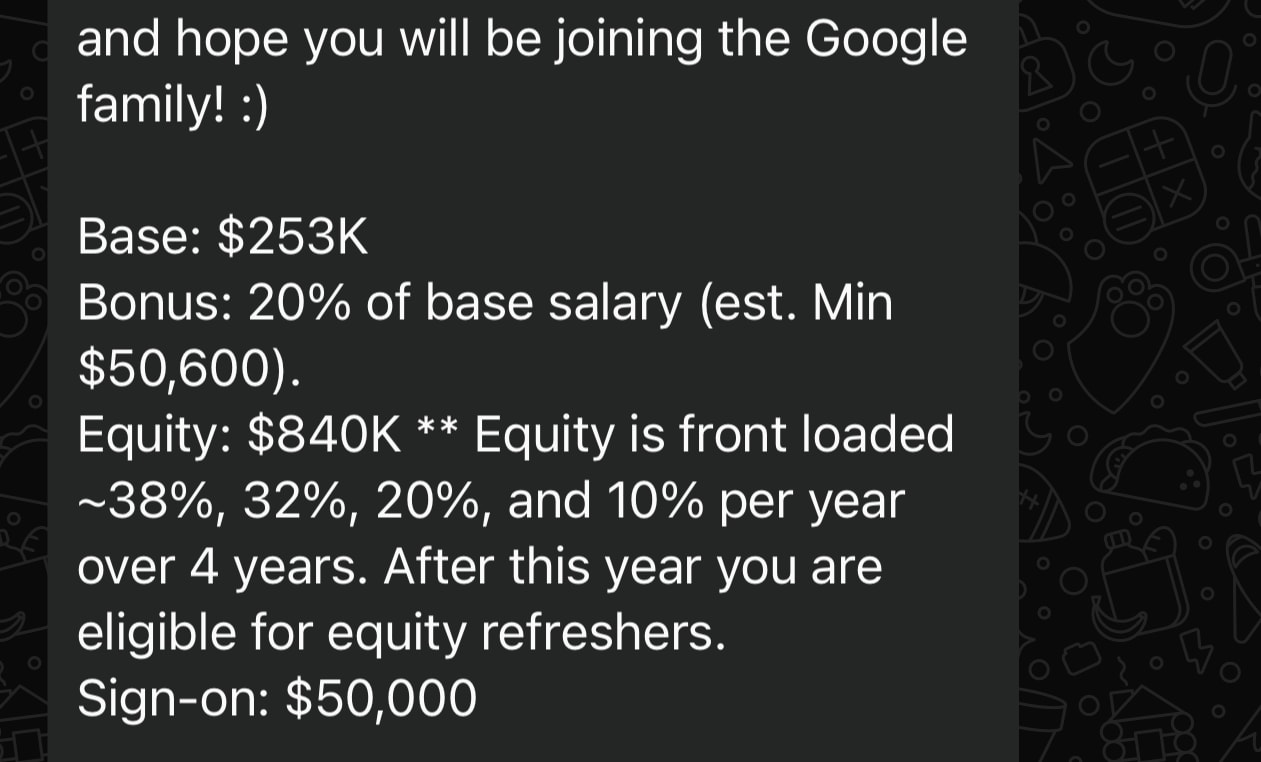The first time I met Geeta Sharma, she was five minutes early and looked like she hadn’t slept in three days. “Taha, hi,” she said, pushing her hair behind one ear, eyes flicking to her second screen. “Thanks for making time. I won’t take long.”
Senior Engineering Manager. Twenty years at the same company. CS grad. Data, storage, cloud. But it was the way she sat that caught my attention.
Her camera framed a neat room, with a lavender yoga ball serving as a chair, and a woman who kept repositioning herself to rub her lower back unconsciously. She tried to hide it.
She was there for a new role, but underneath, nothing was moving. Her system was screaming. She’d landed four interviews. Failed two. The other two, she ghosted.
In the first month, there was a moment—small, too small for most people to catch—when she rescheduled due to a medical appointment. “MRI,” she said. “Nothing serious… nothing serious. Just something in my back. Right side.” She dismissed it like deja vu. In reality, she was trapped.
This is the person I started working with in April. She landed a Google L6 Manager role in October. Which was odd. Because by July, Geeta was no longer a manager.
To understand how she went from that state of collapse to a Google offer, you have to stop looking at her “motivation.” It wasn’t a failure of willpower. It was a systems error.
In engineering, the hardest bugs aren’t in the logic; they’re in the state.
A race condition, a memory leak, a corrupted flag: the code looks right, but the system behaves erratically because its internal state is wrong. You can’t execute a “write” command from a “read-only” state. You can’t service a new request when you’re stuck in a garbage-collection loop.
The human operating system is no different.
We call it “procrastination” or “laziness,” but that’s the wrong error message. It’s the high-level, generic exception on your dashboard, like ERR_MOTIVATION_FAILURE, that tells you what failed, but not why.
The real issue is a low-level state error.
You’re trying to run the practice_interview() command from STATE_ABORT. It will never execute.
I did the same. I solved massive problems at Microsoft, Yahoo, Walmart, leading teams of 250+. Most of it came from spinning inside that cycle. I burned out: double bypass heart surgery at 41. So, I made it my mission.
In 2022, I began coaching high-performers: engineers, managers, and tech leads with bulletproof resumes and brittle nervous systems, the ones who take cold showers at 5 am and still feel like frauds by noon.
Over 200 of them have walked through this cycle with me. Some now work at Google, Microsoft, Meta. Some just sleep better.
This post serves as a debugger to help you find the bug.
Geeta’s system was a perfect example of this. She thought her problem was Focus. She believed if she just focused harder, her Behavior would become consistent.
She was half-right. Her behavior was consistent: consistently avoiding.
She was trying to debug without the schematic. She thought her operating model was a simple, two-step process:
Focus → Internal State
The real model, the architecture of the human operating system she was actually running, is a three-step process:
Focus → Internal State → Behavior (FISB)
This was the schematic she was missing.
Her Focus (F): Her conscious, logical goal. “I will practice DSA.”
Her Behavior (B): The actual, observable output. “Avoidance. Ghosting.”
Her Internal State (IS): This was the black box. The missing link. This is the body’s immediate, unfiltered response. This is the state that was corrupted.
Geeta kept trying to fix her “Focus” by writing more GDocs, all while her “Internal State” was locked in STATE_THREAT and screaming ABORT!
This was the bug in her FISB.
To find it, we start tactically. We tore down her LinkedIn and her resume. The inbox woke up. Netflix. Highspot. Apple. CrowdStrike.
We mock-prepped nonstop. I started to notice she’d delay one, cancel another. Say she was fine, then text at 2 a.m. about whether to use the word “drive” or “lead” in her answer. It wasn’t indecision. It was exhaustion she didn’t know how to catch.
Then, Google reached out. Engineering Manager. L6. The kind of role people spend careers chasing. She said she felt... nothing. Not relief. Not joy. Just a flatline hum of obligation.
That’s when the body stopped whispering and started screaming.
She broke out in hives.
Slept in fits. Woke up at 2:30 a.m. to do classical music riyaaz, then fell asleep again mid-afternoon.
Her body was stuck in a cycle of alert-collapse-alert.
The following week, she came to the session and began with a sentence that should have sounded ordinary. But it didn’t.
“I’m an IC now.”
No drama in her voice.
“My boss told me I am not technical enough,” she said. “So I started taking more design tasks. This started a month before we met.” She paused. “Now they say it is better if I focus on IC work… Besides, I will not have to deal with my boss that much.”
That line sat between us. It sounded like relief. It reeked of avoidance.
The crash and the confession opened a door. The following week, she came to the session with a different thought. The one I was waiting for.
“Taha, there’s something I should probably talk about,” she said. “But I don’t know if it’s relevant.”
“If you’re thinking about it,” I said, “it’s relevant.”
She got quiet, calculating. The bug was in the way.
I gave her a nudge. “I had a boss at Microsoft who took away my teams, put me on a PIP.”
I expected her to answer with her boss. She didn’t.
“I had a boyfriend in Mumbai… It wasn’t working,” she said, the words finally came out. “I knew that. But I didn’t want to be the one who gave up. Family didn’t like him. I didn’t either… near the end. But I stayed. Tried to hold everything together. My family, my studies, him. Then I left for the US. I didn’t even say goodbye.”
Her eyes didn’t blink for a long time. “I didn’t let myself feel anything. I just... moved. Switched. Got promoted. Changed teams whenever a manager made me feel small. That’s what I do. I just... switch.” She didn’t sob. She just let the tears fall. Didn’t wipe them. Didn’t apologize. Just sat there, unguarded.
The way out is not more punishment. Guilt does not dissolve by beating it. It dissolves by extracting the lesson and forgiving the person who did not know better yet.
I asked Geeta to try a sentence. Simple. Precise. Like a patch.
“Say, ‘I forgive myself for making the decisions that brought me to this point.’”
She nodded fast, excited to get it right. She raised her fist like she was about to lift a barbell. She started.
“I forgive my...” Then stopped.
Her hand flew to her mouth. She turned away, and a small sound came out.
“I cannot say that,” she whispered. “I do not know why, but I do not want to say it.”
“It’s all right,” I said. “Tears are not a flaw. I cry all the time. It’s how we let go of unprocessed memories.”
She sat down, wrote the sentence on a page, stared at it for a long moment, then spoke it all the way through. A moment later, she cried like a child who had finally found a lap.
I told her what would happen next.
The memory would fight back. It would visit her in the shower, in traffic, in her practice. Each time, she was to say the line again without fighting the memory. Over the next three days, she constantly cried in storms and let them pass.
On the weekend, she sent me a line.
“At this point, I finally feel like I have nothing to prove to anybody.” It did not sound like victory. It sounded like a bag placed on the floor and not picked up again.
The back eased by half. The hives did not return. Her system state was finally reset.
Focus: “I want a new job. I need to practice.”
Internal State: “Calm. Steady. Ready.”
Behavior: “Open Hello Interview. Leadership stories. Run mocks.”
A funny thing happens when you let grief complete a sentence. Competence becomes quiet again. She started answering interview questions like a person who had lived something rather than read something. Shorter, cleaner, more honest. When judgment loosens, the body calms. When the body calms, the voice gets wiser. When the voice gets wiser, people finally hear what you have been doing for twenty years.
In October, Google extended an offer. She texted me at night. “I got it. L6 Manager.”
She wanted to accept immediately to end the suspense. The urge to close quickly is the body looking for quiet. I asked her to wait a day. She waited. She accepted with a clear back.
Her last week at the old company filled with notes she never knew she deserved.
People wrote that she was the best manager they had. That she changed the way they think about failure. That she made their job make sense. Avoiders leave quietly and so they never learn how loud the room becomes when they are gone. She collected those messages and read them, really read them, for the first time.
We met once more before she took time off.
She looked the same and not the same. Bodies tell you stories if you stop arguing. The hand no longer reached for the lower back. The shoulders had stopped trying to eat the neck.
I told her to keep one sentence in the bathroom mirror. The one she cried through. I forgive myself for making the decisions that brought me here. Write it where you’ll see it every morning. You can’t change those choices, but you can finish processing them.
Shame did not vanish. Shame rarely leaves all at once. It could complain from the back seat. It could not take the wheel. That is what processing guilt does. It extracts the lesson. It lets you forgive the person who did not know yet. It returns the keys to your hands.
I reminded her that there will be days at the new place where the old behavior would make sense. A manager will be learning in public. An email will carry a tone that pricks you. The thought of switching will glow like a clean exit. That is when the rule matters. When a manager’s style pinches and the old impulse says transfer, pause. Name the state before you move your feet. Do not make a plan for seventy-two hours. Then decide. Not because staying is always noble. Because leaving is no longer the only trick you know.
If you asked me what coaching is, I could give you frameworks until the sun gets bored. But the secret is this: People book a coach for strategy. They stay because someone finally refuses to collude with their avoidance.
My job was not to get Geeta Sharma a better offer, although she did that herself the second she stopped sprinting. My job was to stand in the doorway when she wanted to bolt and say, You can leave if you want, but why not sit with me for one more minute and see if the rage you feel is only a candle.
Sometimes I catch myself opening our chat to see the green dot beside her name. It is almost always there. The lavender yoga ball is probably still there. I hope she sometimes sits in a chair instead. I hope she reads the mirror sentence when brushing her teeth. I hope when the first strange thing happens in the new org and the old urge says transfer, she waits. I hope she learns that staying still is not the same as being trapped. It is often the only way out.
Follow me on LinkedIn for daily insights shared with 80,000+ incredible minds.
If you’re looking to grow your career, here are five ways I can help you:
The Resume Ghostbuster: Join 5,000+ people who’ve transformed their resumes into recruiter magnets. Use the robust AI script to transform your resume into the template of your choice. Includes LinkedIn profile update and job search strategies.
The Top Engineer Method: Join 1,000+ engineers worldwide and master the skills AI can’t touch. Learn to showcase your work, build influence, and navigate politics to keep your career in your control.
The Top Tech Leader Method: Join 500+ engineering leaders across the globe inside The Top Tech Leader Method. Learn the People Intelligence skills I used to lead high-performing teams, influence executives, and grow into an engineering executive at startups and top-tier tech companies.
Personalized 1:1 Coaching: Work with me directly to debug your inner system, reset your operating state, and break the cycle of high-functioning burnout. This is where we do the deep work.
Visit Taha’s Method: For more courses, tools, and practical guides.
.png)






